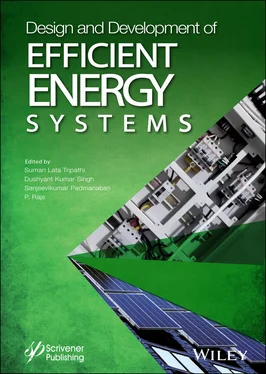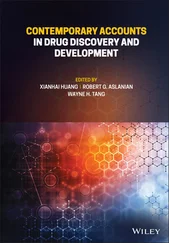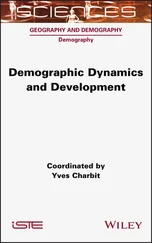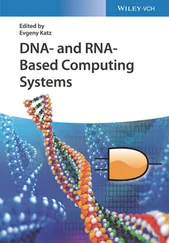14. Radhakrishnan, D., & Preethy, A. P. (2000, August). Low power CMOS pass logic 4-2 compressor for high-speed multiplication. In Proceedings of the 43rd IEEE Midwest Symposium on Circuits and Systems (Cat. No. CH37144). 2000, IEEE (Vol. 3, pp. 1296-1298).
15. Ram, G. C., Lakshmanna, Y. R., Rani, D. S., & Sindhuri, K. B. (2016, March). Area efficient modified vedic multiplier. In International Conference on Circuit, Power and Computing Technologies (ICCPCT). 2006, IEEE (pp. 1-5).
16. Prabhu, E., Mangalam, H., & Gokul, P. R. (2019). A delay efficient vedic multiplier. Proceedings of the National Academy of Sciences, India Section A: Physical Sciences, 89(2), 257-268.
17. Dutta, K., Chattopadhyay, S., Biswas, V., & Ghatak, S. R. (2019, November). Design of Power Efficient Vedic Multiplier using Adiabatic Logic. In International Conference on Electrical, Electronics and Computer Engineering (UPCON) , 2019, IEEE (pp. 1-6).\
18. Shukla, V., Singh, O. P., Mishra, G. R., & Tiwari, R. K. (2020). A Novel Approach for Reversible Realization of 4× 4 Bit Vedic Multiplier Circuit. In Advances in VLSI, Communication, and Signal Processing , 2020, Springer, Singapore, (pp. 733-745).
19. Karthikeyan, S., & Jagadeeswari, M. (2020). Performance improvement of elliptic curve cryptography system using low power, high speed 16× 16 Vedic multiplier based on reversible logic. Journal of Ambient Intelligence and Humanized Computing , 1-10.
20. Koul, R., Yadav, M., & Suneja, K. (2020). Novel FPGA-Based Hardware Design of Canonical Signed Digit Matrix Multiplier and Its Comparative Analysis with Other Multipliers. In International Conference on Artificial Intelligence: Advances and Applications 2019 , Springer, Singapore (pp. 65-75).
21. Kyaw, K. Y., Goh, W. L., & Yeo, K. S. (2010, December). Low-power high-speed multiplier for error-tolerant application. In International Conference of Electron Devices and Solid-State Circuits (EDSSC) , 2010, IEEE (pp. 1-4).
22. Raju, B. R., & Satish, D. V. (2013). A high speed 16* 16 multiplier based on Urdhva Tiryakbhyam Sutra. International Journal of Science Engineering and Advance Technology, IJSEAT , 1(5), 126-132.
23. Panda, S. K., Das, R., & Sahoo, T. R. (2015). VLSI implementation of vedic multiplier using Urdhva–Tiryakbhyam sutra in VHDL environment: A novelty. IOSR Journal of VLSI and Signal Processing (IOSR-JVSP) , 5(1), 17-24.
24. Kerur, S. S., Prakash Narchi, J. C., Kittur, H. M., & Girish, V. A. (2011). Implementation of Vedic multiplier for digital signal processing. In International Conference on VLSI, Communication & Instrumentation (ICVCI), 2011 (pp. 1-6).
25. Mehta, P., & Gawali, D. (2009, December). Conventional versus Vedic mathematical method for Hardware implementation of a multiplier. In International Conference on Advances in Computing, Control, and Telecommunication Technologies , 2009, IEEE (pp. 640-642).
26. Bansal, Y., Madhu, C., & Kaur, P. (2014, March). High speed vedic multiplier designs-A review. In Recent Advances in Engineering and Computational Sciences , 2014, IEEE (RAECS) (pp. 1-6).
27. Huddar, S.R., Rupanagudi, S.R., Kalpana, M., & Mohan, S. (2013). Novel high speed vedic mathematics multiplier using compressors. 2013 International Mutli-Conference on Automation, Computing, Communication, Control and Compressed Sensing (iMac4s), 2013 (465-469).
Email : abhishek.15393@lpu.co.in
3
Gas Leakage Detection from Drainage to Offer Safety for Sanitary Workers
Dr. D. Jeyabharathi1*, Dr. D. Kesavaraja2 and D. Sasireka3
1 Assistant professor, Department of Information Technology, Sri Krishna College of Technology, Coimbatore
2 Associate professor, Dept. of CSE, Dr Sivanthi Aditanar College of Engineering, Tiruchendur, India
3 Research Scholar, VV College of Engineering, Tisaiyanvillai, India
Abstract
A drainage system is an arrangement to move liquids away from where they are not required for disposal in appropriate locations. A drainage system can include anything from gutters and drains in houses to remove rain water, storm water systems to drain rainwater from roads into roadside drains and drainage systems to remove sewage from houses into municipal sewers for disposal. Within the medical industry, drainage systems can mean methods to drain unwanted fluids from the body, such as pus from wounds, and colostomy bags to remove body wastes and fluids from internal abscesses and ulcers. Within engineering it can mean systems for removing spent oil, coolant liquids and by-products from industry referred to as industrial waste.
Gas leaks are a serious hazard that can cause harm to workers, buildings and the environment. Detecting leaked gas can help to reduce these risks. Gases such as Carbon monoxide (CO), Hydrogen sulphide (H2S), Methane (CH4) are some of the hazardous gases present in underground drainage systems. These gases are very harmful to human beings and may lead to death. To avoid those problems, we have proposed a gas leakage detection system.
Keywords: Sewer gas detection, crack detection
3.1 Introduction
3.1.1 IOT-Based Sewer Gas Detection
A drainage system is a system that forms wastewater from various patterns such as streams, rivers, and lakes. The function of a drainage system goes beyond the removal of wastewater. During this time many deaths will occur due to sewer gases leakage from wastage.
Drainage systems must also be designed to prevent backflow, while keeping sewer gases away from indoor spaces. The expression “sewer gas” is utilized to portray the blend of gases discharged by sewage, and singular gases can be poisonous or non-harmful.
Many sewer gases are scentless, and the trademark smell when they break can be credited to hydrogen sulfide. This gas is likewise poisonous and combustible, which makes it risky in higher fixations. Once sewer gases can be smelled in a structure conditions could be hazardous or unsanitary. Since sewer gas contains methane gas (CH4) there is a danger of a blast peril or even deadly suffocation.
In addition, some writers opine that there are possible health hazards from sewer gas exposure, such as a bacterial infection of the sinuses (which can occur due to any sinus irritation). Contingent upon the sewer gas source and different factors, for example, mugginess and building and climate conditions, spores may form and may likewise be present in sewer gases.
In a little over a year, more than 20 workers have died in sewers. It affects human life and such workers put their lives at risk. This is because of the lack of adequate emergency facilities available in our country.
To improve this, there is a need to alert the emergency services to investigate the sewer gas leakage as soon as possible when the risk factor is high. That is, to find the risk level in the sewer gas leakage based on thresholding and give the alert once it exceeds it. With the help of IoT sensors, when the situation is abnormal, people’s lives can be saved. So, IoT-based sewer gas leakage detection and prevention is essential.
The Internet of Things (IoT) is an arrangement of interrelated computing gadgets, mechanical and digital machines, objects, animals or individuals that are given one kind of a identifier and the capacity to exchange information over a system without requiring human to human intervention. Using IoT technique, an automatic sewer gas leakage detection and prevention system can be built [10–23].
Compared to hardware equipment, sensors are getting simpler to collect data and less expensive. Whether using sounds, vibrations, images, electrical signals or accelerometer or other kinds of sensor data, richer analytics can be built by teaching a machine to detect and classify events happening in real time, at the edge, using an inexpensive microcontroller for processing—even with noisy, high variation data.
Читать дальше












